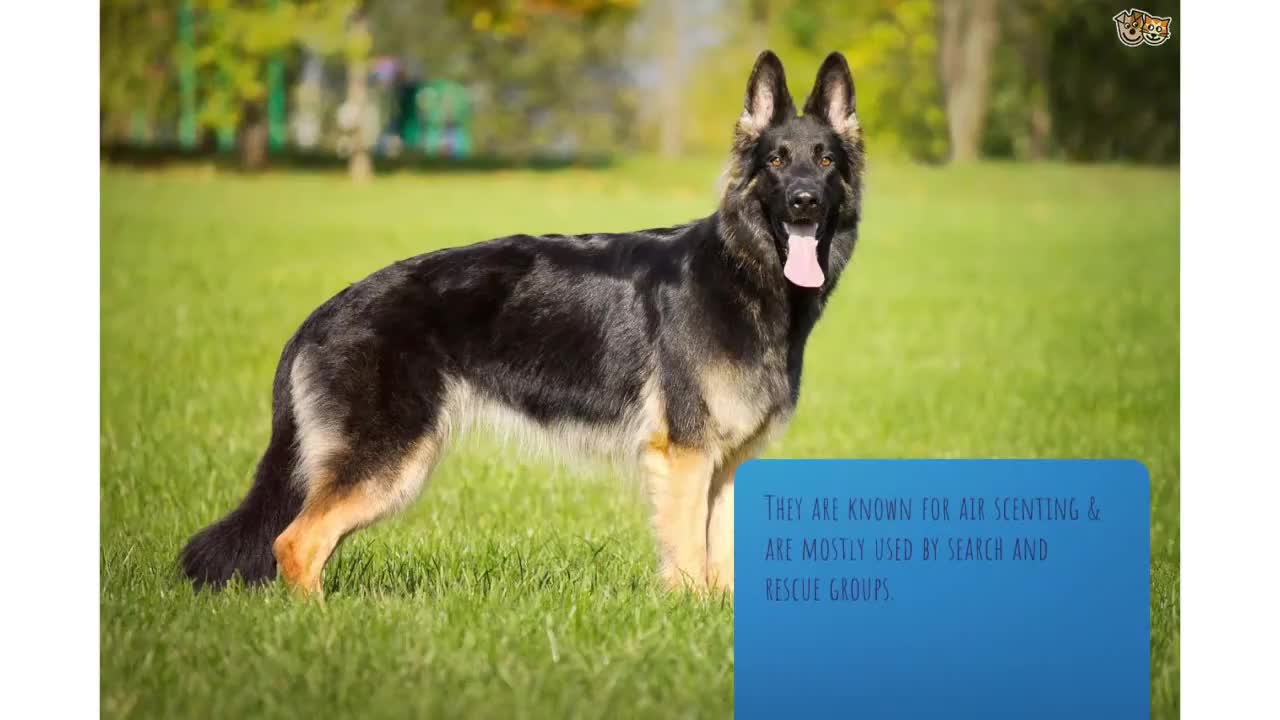Premium Only Content

dogs sense of smell
Dogs possess a sense of smell many times more sensitive than even the most advanced man-made instrument. Powerful enough to detect substances at concentrations of one part per trillion—a single drop of liquid in 20 Olympic-size swimming pools. With training, dogs can sniff out bombs and drugs, pursue suspects, and find dead bodies. And more and more, they’re being used experimentally to detect human disease—cancer, diabetes, tuberculosis, and now, malaria—from smell alone.
Dogs' noses also function quite differently than our own. When we inhale, we smell and breathe through the same airways within our nose. When dogs inhale, a fold of tissue just inside their nostril helps to separate these two functions.
When we exhale through our nose, we send the spent air out the way it came in, forcing out any incoming odors. When dogs exhale, the spent air exits through the slits in the sides of their noses. The manner in which the exhaled air swirls out actually helps usher new odors into the dog's nose. More importantly, it allows dogs to sniff more or less continuously.
We can't wiggle our nostrils independently. Dogs can. This, along with the fact that the so-called aerodynamic reach of each of their nostrils is smaller than the distance between the nostrils, helps them to determine which nostril an odor arrived in. This aids them in locating the source of smells—we've all seen dogs on an interesting scent weave back and forth across its invisible trail.
A human nose might be able to detect more than one trillion smells, but it’s no match for a dog’s. Canines can sniff out explosives, drugs and even follow trails that are more than a week old.
They are able to do this due to the unique way their noses are set up. Humans have a single hole that takes in both air and smells, dogs have a flap of tissue that sends smells one way and air the other, allowing them to process the smells much more efficiently. They even have a system for the other direction, so while humans breathe out through their single nose hole and blow out any smells, dogs can exhale through a couple of small slits in their noses, meaning that any smell stays in their noses for a long time, allowing them to track scents for up to 210 kilometers (130 miles).
Canines’ advantage over humans extends right down to cellular level as well. They have about 230 million olfactory cells, the ones used for smelling, in their nose. By way of comparison, humans have to make do with anything between five and 40 million. No wonder they are always around as soon as you’re opening the dog-food tin!
However, dogs don’t just have this sense in order to sniff out their next meal. Their noses are pretty much equivalent to our eyes in terms of reading the world around them. When dogs inhale, they aren’t just picking up on scents. Their vomeronasal organ is at the bottom of their nasal passage and enables them to detect pheromones – chemicals that can reveal stacks of information about the other animals that have been in that area before them.
this video is uploaded from you tube Creative Commons Attribution license.
-
 1:58:28
1:58:28
Redacted News
3 hours agoBREAKING! Elon Musk DESTROYS spending bill, Ron Paul pushes to make him Speaker | Redacted News
96.4K186 -
 51:06
51:06
VSiNLive
2 hours agoCollege Football Playoff & Bowl Game Best Bets! | VSiN College Football Betting Podcast LIVE
16.5K1 -
 1:34:33
1:34:33
Candace Show Podcast
2 hours agoHow We Faked The Moon Landing With Bart Sibrel | Candace Ep 124
37.4K115 -
 DVR
DVR
Scammer Payback
2 hours agoCalling Scammers Live
12.5K3 -
 1:01:07
1:01:07
In The Litter Box w/ Jewels & Catturd
23 hours agoVOX POPULI, VOX DEI | In the Litter Box w/ Jewels & Catturd – Ep. 709 – 12/19/2024
76.5K26 -
 22:54
22:54
Stephen Gardner
4 hours ago🔥JUST NOW: Trump JUST SHOCKED GOP with new DEMAND!!
52.6K33 -
 1:23:22
1:23:22
Tate Speech by Andrew Tate
5 hours agoEMERGENCY MEETING EPISODE 96 - LAWFARE BREAKDOWN
177K125 -
 16:53
16:53
DeVory Darkins
23 hours ago $14.50 earnedElon Musk Drops NIGHTMARE WARNING on Congress
43.2K211 -
 1:29:17
1:29:17
Mally_Mouse
5 hours agoLet's Play!! - Stardew Valley
30.6K1 -
 8:56
8:56
Melonie Mac
4 hours agoMy Superman Trailer Impressions
24.1K28